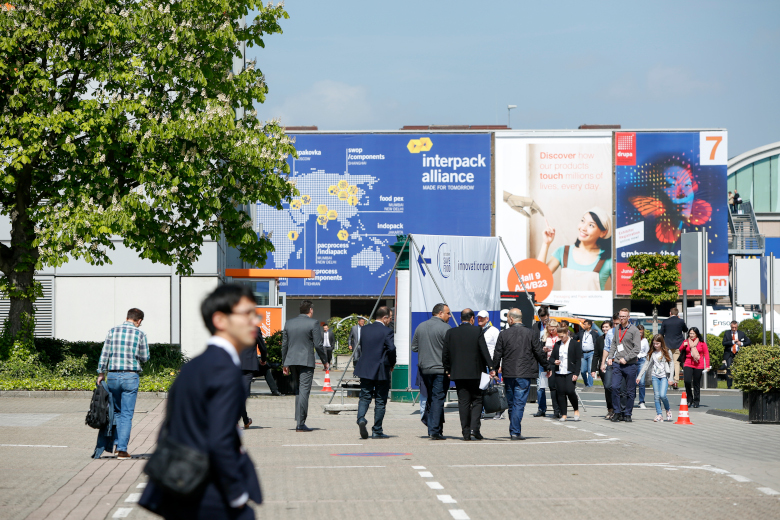
From circular economy to digitalization, the hot topics of the industry meet the latest technologies and innovations at interpack. The organizers are ready to welcome exhibitors and visitors from May 4 to 10. Innovations for all sectors will be on display, from food and beverages to confectionery and bakery products, pharmaceuticals, cosmetics, non-food and industrial goods.
The underlying focus of interpack 2023 is on digital technologies and sustainable products and processes. ‘We notice very clearly the great determination of the industry to actively shape this transformation process’, says Thomas Dohse, Director of interpack.
Exhibitors come from over 60 countries this year – the top exhibiting nations are Germany, Italy, China, Turkey, India, the Netherlands, the USA, France, Spain, Switzerland and the UK. A total of over 2,700 exhibitors are joining the fair.
The packaging sector
With over 1,000 exhibitors, the packaging sector at interpack is a record-breaking installment, with a focus on packaging materials, packaging supplies and packaging aids. All common materials and products of the packaging market will be presented here.
In addition to solutions made of paper, cardboard and paperboard, visitors can expect to see new, sustainable materials in numerous variants with a focus on sustainability. There are also new approaches towards a circular economy, for example with recyclable films, monomaterial solutions and the use of recyclates or reusable packaging.
The increasing digitalization of the industry is also leading to new developments in the packaging sector. Some examples for this are digital labels, smart packaging and packaging with QR codes.
Four hot topics reflect the trends
- The circular economy is an all-encompassing model that poses major challenges in many areas. In the age of climate change, the goal is to produce as little unrecyclable waste as possible.
- Sustainable processing and packaging solutions will be highlighted, as well as digital services that help to make production processes efficient and sustainable. For example, the focus is on reducing the carbon footprint of packaging throughout the value chain, improving energy efficiency and the increasing importance of reusable materials, which will help the industry to make optimal use of resources.
- Digital technologies: big data, augmented reality and remote machine maintenance have long since found their way into assembly shops and machine fleets. For example, the Fraunhofer Institute for Process Engineering and Packaging will be providing information on digital training systems based on virtual reality in the VDMA Technology Lounge
- Product safety remains one of the core tasks of packaging. The industry is already making an important contribution to reducing food waste. Digital technologies are key in this regard.
Inspiration from new specials
The exhibition program is complemented by events such as the Spotlight talks & trends lecture forum with seven theme days, the interpack Start-up Zone, the Co-Packing joint booth, several award ceremonies with exciting packaging innovations, the SAVE FOOD Highlight Route with new approaches in the fight against global food loss and waste and the promotion of women at Women in Packaging and Late Night during the day in the Tightly Packed TV studio.
Photo: Messe Dusseldorf GmbH (C. Tillmann)


